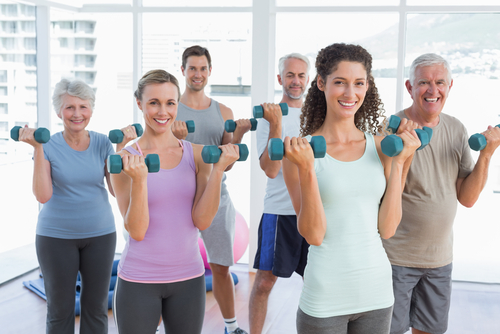Having high cholesterol means you are at a higher risk for stroke, diabetes and heart disease – the number one cause of death for men and women in the United States. Many people do not know they have high cholesterol because high cholesterol does not have any signs or symptoms.
The Risks of High Cholesterol
If you have high cholesterol, you want to lower it because it increases your risk of developing heart disease, which is the leading cause of death in the United States. According to the American Heart Association, high cholesterol is one of the major controllable risk factors for coronary heart disease, heart attack and stroke.
How Exercise Helps
Regular exercise and incorporating a healthy diet and lifestyle reduces the amount of cholesterol circulating in the blood and limits heart diseases and many other complications which are associated with having high cholesterol. Performing 30 minutes of regular exercise three to five times a week has been proven to lower LDL levels (the “bad” cholesterol) and elevate HDL levels (the “good” cholesterol).
“Exercise and being fit helps keep arteries clear by lowering ‘bad’ [LDL] cholesterol and boosting ‘good’ [HDL] cholesterol,” explained study author Dr. Xuemei Sui, an assistant professor at the Arnold School of Public Health at the University of South Carolina in Columbia, S.C.
“It also reduces other risk factors for atherosclerosis [narrowed arteries] and blood clots, such as high blood pressure, diabetes, obesity and stress,” Sui said.
Exercise Tips for People with High Cholesterol
1. Always talk to your doctor to ensure safety before starting any exercise program. Some health conditions, such as high blood pressure, can make certain types of exercise unsafe for you.
2. If you are new to exercise or haven’t been active in a while, start slowly and increase your workout time and intensity as you get stronger.
3. Try not to push yourself too hard. Listen to the signals that your body sends about what is happening. These signals will tell you if you are pushing yourself hard enough or if you are holding back.
Benefits of Physical Fitness
“The benefits of physical fitness in improving cholesterol levels are greatest in young to middle-age adults and tend to decrease gradually with older age,” said Dr. Usman Baber, a cardiovascular researcher at the Icahn School of Medicine at Mount Sinai in New York City.
“These findings should reinforce the importance of young to middle-age men incorporating regular aerobic exercise as part of a healthy lifestyle,” Baber, co-author of an editorial accompanying the study in the Journal of the American College of Cardiology, said in an email to Reuters Health.
Which type of exercise is best?
Aerobic exercises seem to benefit cholesterol the most – lowering LDL by 5 to 10% and raising HDL cholesterol by 3 to 6%. Aerobic exercise includes jogging, biking, swimming, hiking, running and walking. Studies have shown that strength training can also help improve your LDL and HDL levels.
There are also other ways you can reduce your cholesterol such as losing weight, eating heart-healthy foods, limiting alcohol consumption and quitting smoking.
If diet and exercise do not bring blood cholesterol levels to normal levels, cholesterol lowering medication may be needed. Consult with your physician before starting any medication.
Sources
ncbi.nlm.nih.gov
heart.org
reuters.com
newsmax.com
